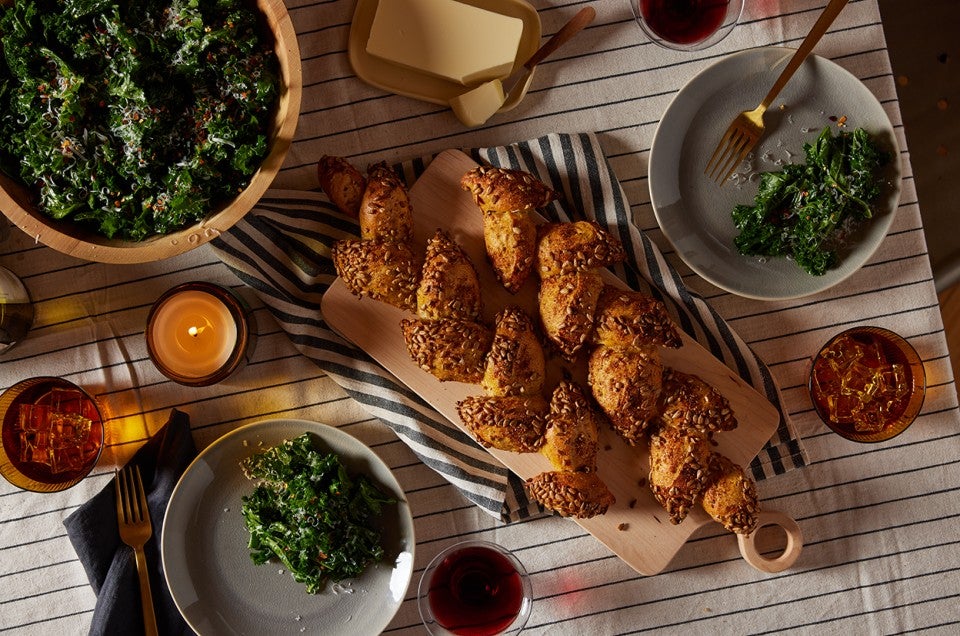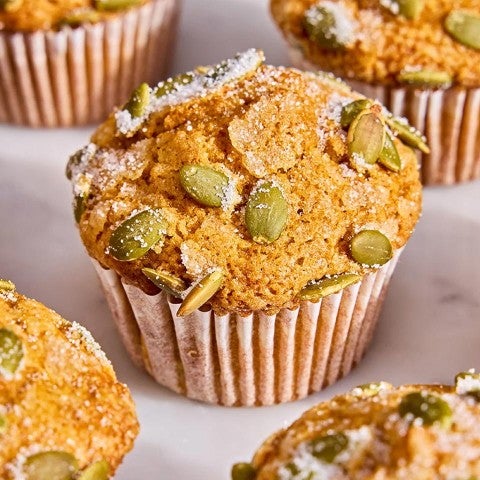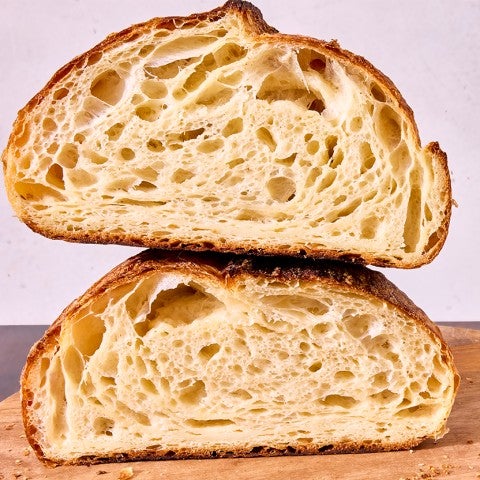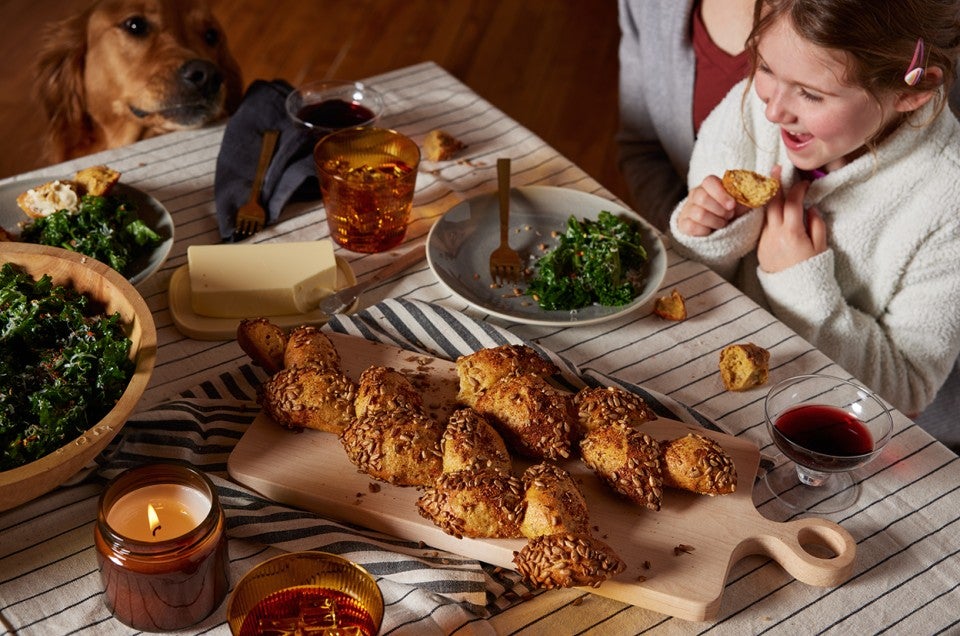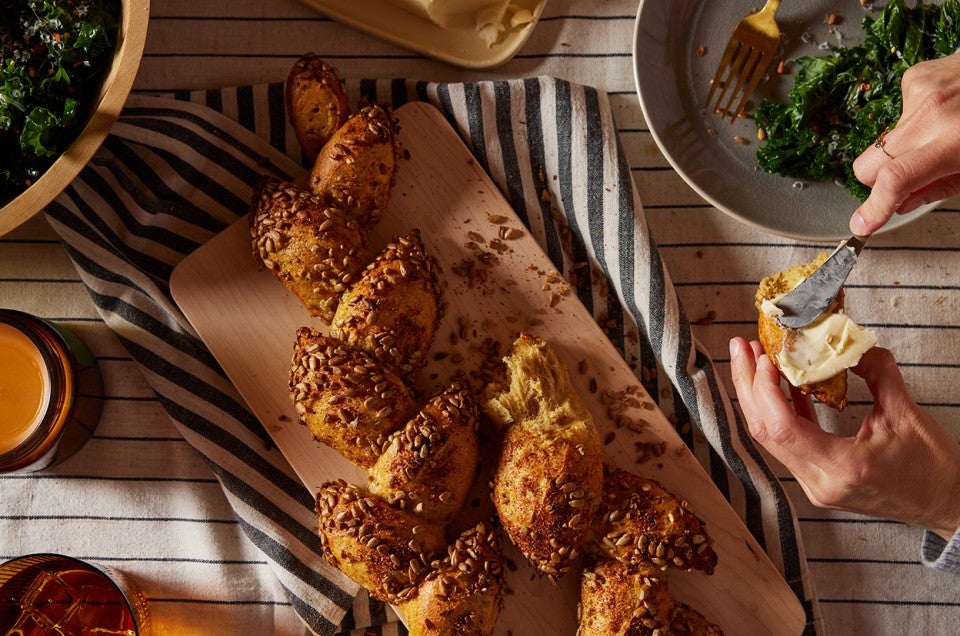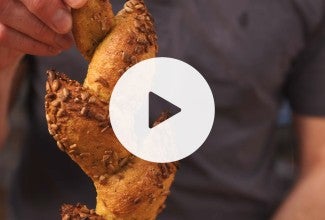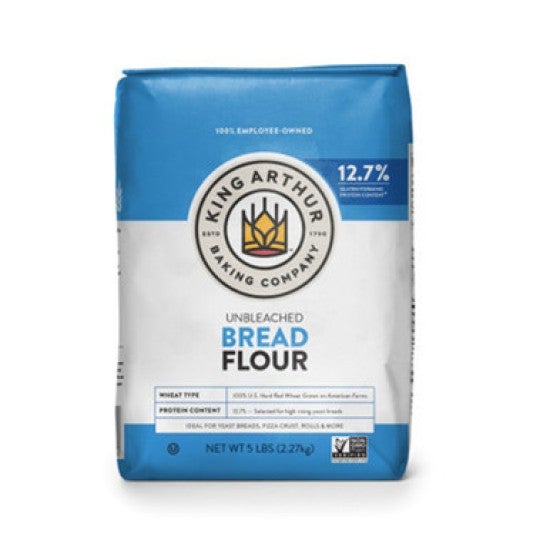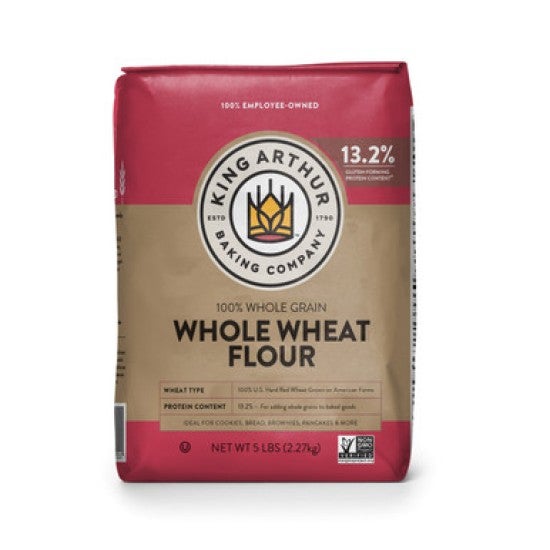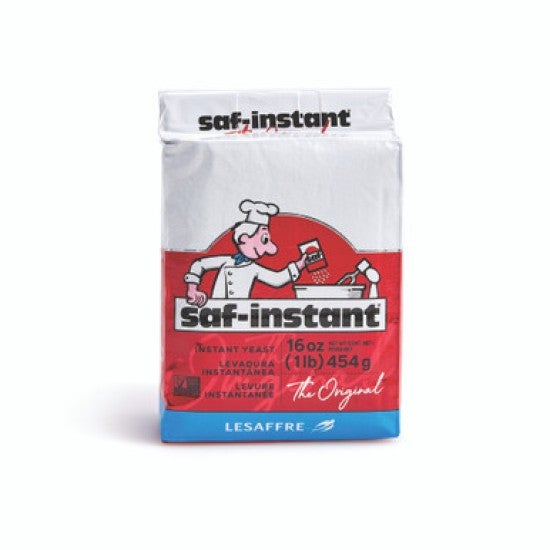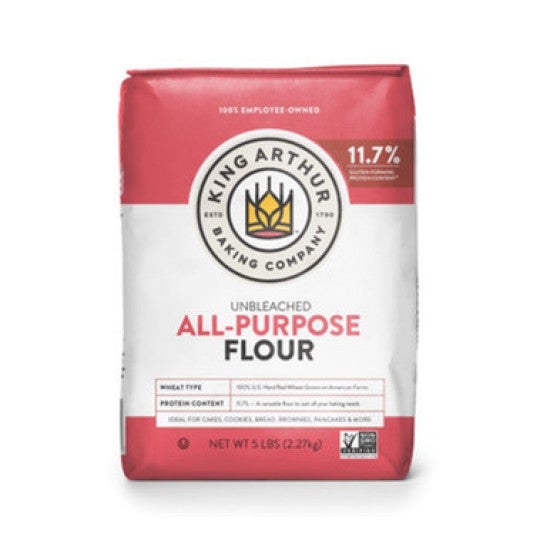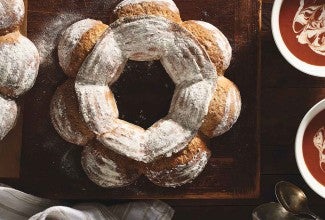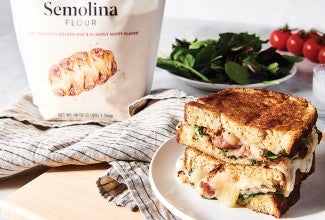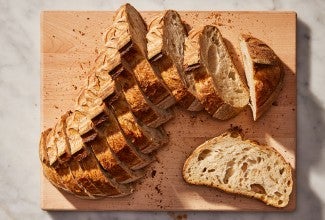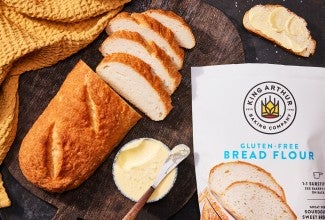-
For best results, weigh your flour; this recipe was developed by metric weight. However, if you prefer to work with volume measurements, please be sure to measure your flour the King Arthur way: gently spoon the flour into a cup, then sweep off any excess.
-
To make the preferment: In a small bowl or large jar, combine all the ingredients, stirring briefly to combine. Cover and rest for 12 to 18 hours.
-
To make the dough: In a large bowl, combine the water, pumpkin, and preferment, stirring to disperse the preferment. Add the remaining dough ingredients and mix with clean hands until thoroughly combined and homogeneous. The dough will be shaggy and rough at this point; it will become smoother and stronger during the next steps. Cover the bowl and set it aside for 20 minutes.
-
With a wet hand, knead the dough in the bowl for about 30 seconds, until it’s smoother and more elastic. Cover and set it aside for 20 more minutes.
-
Knead the dough once again in the bowl for 30 seconds, then cover and let it rest for 1 to 1 1/2 hours, until the dough is noticeably puffy and has increased in volume by at least 1 1/2 times.
-
After the dough has risen, divide it in half (about 340g per piece).
-
To preshape the loaves: Use lightly floured hands to pat one piece of dough into a rectangle that’s about 8" long, pressing gently to remove any air bubbles. Fold in the left side and the right side to meet in the middle, then press to gently seal. Starting at the top, fold the rectangle towards you in 3 motions, pressing gently after each fold, to create a cylinder with the seam-side down. The entire time you work, apply flour as needed to make sure the dough is moving easily on the work surface, with no wet bits sticking. Repeat this process with the other piece of dough. Cover the preshaped dough and let it rest for 15 minutes.
-
Prepare the seed crust: While the dough rests, sprinkle about half of the chopped sunflower seeds on a baking sheet, distributing them evenly on one side. Mix all of the remaining crust ingredients together in a small bowl and sprinkle about half of this spice mixture evenly over the seeds.
-
Lightly sprinkle a piece of parchment with cornmeal and place it on an inverted baking sheet or baker’s peel.
-
To shape the loaves: Move a piece of preshaped dough to the center of the lightly floured surface, invert so the seam is facing up, then stretch it gently to elongate on the east/west axis and pat it lightly to remove any bubbles. Next, fold the dough 2/3 of the way down from the top and pat to gently seal. Rotate the dough 180° and fold toward you again, bringing it 2/3 of the way down; pat gently to seal. Last, make a gentle east/west divot in the middle of the dough and then fold, bringing the top to the bottom. Press to seal the dough with the heel of your hand.
-
With the seam-side down, place one of your palms in the middle of the dough and roll it gently back and forth. With light pressure, a dog bone shape will form. Next, add your second hand and roll the dough side to side, pushing it back and forth so that it travels across the work surface; slowly move your hands apart and toward the tips of the log, adding pressure so that the ends taper. If the dough is resistant, go back to the middle and take another pass. Aim for your loaves to be 16" to 18" in length so that they fit comfortably on the baking stone or steel (use the parchment as your guide).
-
To add the seed crust: Moisten a kitchen towel and place it on the bare half of the baking sheet. Place the top side of the shaped dough onto the moistened towel, then set the moistened top on the seeds and roll to coat it. For the most thorough coating, let the loaf sit in the seeds for 5 to 10 seconds after rolling. Carefully place the loaf on the cornmeal-sprinkled parchment.
-
Clear the baking sheet, reserving the used seed mixture in a separate bowl, then distribute the remaining sunflower seeds on the baking sheet, sprinkle the remaining spice mixture over top, and shape and seed-crust the second piece of dough. (This two-step process ensures that both loaves get even seeds and spice; otherwise, the first loaf will pick up all the spice.)
-
Cover the loaves and allow them to rise until they're slightly puffy and look lighter and less dense (they will not double in size), 45 to 60 minutes at room temperature (about 68°F); it could take as few as 30 minutes in a warm environment.
-
While the loaves rise, preheat the oven to 500°F with a cast iron pan on the bottom of the oven, or on the lowest rack. (If you can fit 2 cast iron pans, even better; alternatively, use a 9" x 13" pan that you are comfortable reserving for this purpose, as it may warp.) Place a baking steel or stone on the middle rack above the pans to preheat.
-
To make the decorative shape (épi de blé): Hold a pair of scissors at a very low angle at one end of the loaf and open the scissors so they're wider than the bread. Make a swift, clean cut three-fourths of the way into the dough, moving the cut piece to one side. (The deeper you cut into the loaf, the more elegant, though fragile, your épi will be.) Repeat the process 2" to 3" farther down the loaf, moving the newly cut piece to the opposite side from the first. Continue doing this until you reach the other end and have made 8 to 10 “ears.” If you’d like, sprinkle the cut loaf with the leftover seed crust. (Watch this video if you need visual instruction!)
-
Transfer the loaves, parchment and all, onto the hot steel or stone. Carefully pour about 1 cup of water into the cast iron pan(s) and quickly shut the oven door. The billowing steam created by the boiling water will help the loaves rise and give them a lovely, shiny crust.
-
Immediately reduce the oven temperature to 450°F. Bake the loaves for 22 to 28 minutes, or until they're a deep golden brown. For the crispiest loaves, turn off the oven, crack open the door, and let the bread dry out for 5 to 10 minutes. Remove the bread from the oven and cool on a rack before serving.
-
Storage information: Wrap the harvest bread loosely and store it at room temperature for up to several days; freeze for longer storage.
